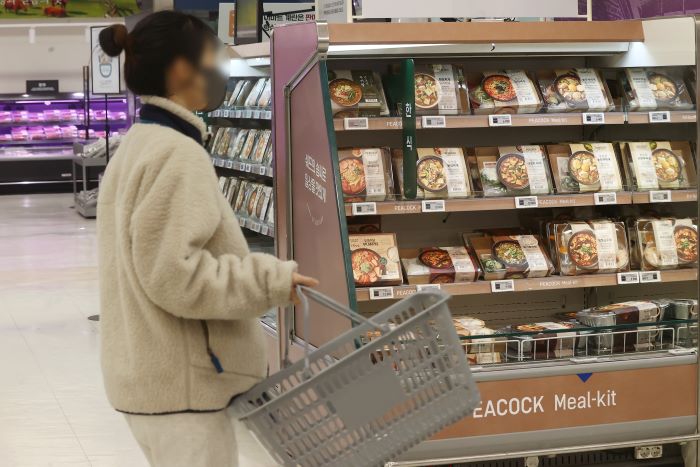
With the growing number of single person households, the number of meal kit products for single person households has increased dramatically. (Yonhap)
SEOUL, Apr. 10 (Korea Bizwire) – The number of single-person households in South Korea has surpassed 10 million, driven by rapid aging and a growing trend toward remaining single, prompting the government to explore policies catering to this demographic shift.
According to population statistics from the Ministry of Interior and Safety released on April 9, there were 10,021,413 single-person households in South Korea as of March, marking the first time the figure has crossed the 10 million threshold.
This record high represents an increase from February’s 9,981,702 single-person households. In March, such households accounted for 41.8% of the total 24,002,008 households nationwide, meaning more than two out of every five households consist of a single occupant.
By age group (in 10-year increments), those aged 60 to 69 comprised the largest segment at 1,851,705 households, followed by those aged 30 to 39 at 1,684,651 households, and those aged 50 to 59 at 1,640,482 households. The 70-and-over demographic also held a significant share at 1,980,297 households.
Regionally, the populous Gyeonggi Province and Seoul had the highest concentrations of single-person households, at 2,251,376 and 2,006,402, respectively, reflecting their larger populations.
In terms of gender, there were 5,154,408 men living alone, outnumbering the 4,867,005 women in the same living situation.
An examination of household sizes in March revealed a continuing trend of growth in smaller households, such as one- and two-person units, while larger households of four or more people declined.
The number of two-person households rose from 5,892,869 in February to 5,909,638 in March, while the number of three-person households increased from 4,035,915 to 4,040,571 during the same period.
In contrast, the number of four-person households decreased from 3,127,685 to 3,113,527.
It’s worth noting that the Ministry of Interior and Safety’s resident registration population statistics tend to show a higher number of single-person households compared to Statistics Korea’s household statistics. This discrepancy arises because the government considers separate residence registration addresses as distinct households, even if individuals share finances or livelihoods.
For instance, a married couple with one child would be counted as a three-person household. However, if the couple lives apart as a weekend family and the child resides elsewhere for educational purposes, they would be recorded as three separate one-person households based on their respective registered addresses.
As the proportion of single-person households continues to rise, driven by factors such as an increasing number of elderly living alone and a growing single population, the government is exploring various policy initiatives to cater to their needs.
Particular emphasis is being placed on addressing fundamental needs such as stable housing and essentials like food and clothing, with related policies being developed as a top priority.
M. H. Lee (mhlee@koreabizwire.com)






